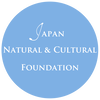Japan Natural and Cultural Foundation
will not support any religion but we support historic monuments which mostly registered by UNESCO
The most significant contributor to architectural changes during the Asuka period was the introduction of Buddhism. New temples became centers of worship with tomb burial practices quickly became outlawed. Also, Buddhism brought to Japan and kami worship the idea of permanent shrines and gave to Shinto architecture much of its present vocabulary.
Some of the earliest structures still extant in Japan are Buddhist temples established at this time. The oldest surviving wooden buildings in the world are found at Hōryū-ji, northeast of Nara. First built in the early 7th century as the private temple of Crown Prince Shōtoku, it consists of 41 independent buildings; the most important ones, the main worship hall, or Kon-dō (金堂, Golden Hall), and the five-story pagoda), stand in the centre of an open area surrounded by a roofed cloister (kairō). The Kon-dō, in the style of Chinese worship halls, is a two-story structure of post-and-beam construction, capped by an irimoya, or hipped-gabled, roof of ceramic tiles.
Heijō-kyō, modern day Nara, was founded in 708 as the first permanent capital of the state of Japan. The layout of its checkerboard streets and buildings were modeled after the Chinese capital of Chang'an. The city soon became an important centre of Buddhist worship in Japan. The most grandiose of these temples was Tōdai-ji, built to rival temples of the Chinese T'ang and Sui Dynasties. Appropriately, the 16.2-m (53-ft) Buddha or Daibutsu (completed in 752) enshrined in the main hall is a Rushana Buddha, the figure that represents the essence of Buddhahood, just as Tōdai-ji represented the centre for imperially sponsored Buddhism and its dissemination throughout Japan. Only a few fragments of the original statue survive, and the present hall and central Buddha are reconstructions from the Edo period. Clustered around the main hall (the Daibutsuden) on a gently sloping hillside are a number of secondary halls: the Hokke-dō (Lotus Sutra Hall), and the storehouse, called the Shōsō-in, and the adjoining Kōfuku-ji. This last structure is of great importance as an art-historical cache, because in it are stored the utensils that were used in the temple's dedication ceremony in 752, as well as government documents and many secular objects owned by the Imperial family.
will not support any religion but we support historic monuments which mostly registered by UNESCO
The most significant contributor to architectural changes during the Asuka period was the introduction of Buddhism. New temples became centers of worship with tomb burial practices quickly became outlawed. Also, Buddhism brought to Japan and kami worship the idea of permanent shrines and gave to Shinto architecture much of its present vocabulary.
Some of the earliest structures still extant in Japan are Buddhist temples established at this time. The oldest surviving wooden buildings in the world are found at Hōryū-ji, northeast of Nara. First built in the early 7th century as the private temple of Crown Prince Shōtoku, it consists of 41 independent buildings; the most important ones, the main worship hall, or Kon-dō (金堂, Golden Hall), and the five-story pagoda), stand in the centre of an open area surrounded by a roofed cloister (kairō). The Kon-dō, in the style of Chinese worship halls, is a two-story structure of post-and-beam construction, capped by an irimoya, or hipped-gabled, roof of ceramic tiles.
Heijō-kyō, modern day Nara, was founded in 708 as the first permanent capital of the state of Japan. The layout of its checkerboard streets and buildings were modeled after the Chinese capital of Chang'an. The city soon became an important centre of Buddhist worship in Japan. The most grandiose of these temples was Tōdai-ji, built to rival temples of the Chinese T'ang and Sui Dynasties. Appropriately, the 16.2-m (53-ft) Buddha or Daibutsu (completed in 752) enshrined in the main hall is a Rushana Buddha, the figure that represents the essence of Buddhahood, just as Tōdai-ji represented the centre for imperially sponsored Buddhism and its dissemination throughout Japan. Only a few fragments of the original statue survive, and the present hall and central Buddha are reconstructions from the Edo period. Clustered around the main hall (the Daibutsuden) on a gently sloping hillside are a number of secondary halls: the Hokke-dō (Lotus Sutra Hall), and the storehouse, called the Shōsō-in, and the adjoining Kōfuku-ji. This last structure is of great importance as an art-historical cache, because in it are stored the utensils that were used in the temple's dedication ceremony in 752, as well as government documents and many secular objects owned by the Imperial family.

